Raymond / Secret Codes & Number Games
Books That Belong On Paper Issue No. 9
Books That Belong On Paper first appeared on the web as Wink Books and was edited by Carla Sinclair. Sign up here to get the issues a week early in your inbox.
RAYMOND IS A TRULY FUNNY, BRIGHT, SWEET READ-ALOUD FOR BOTH KIDS AND GROWN-UPS

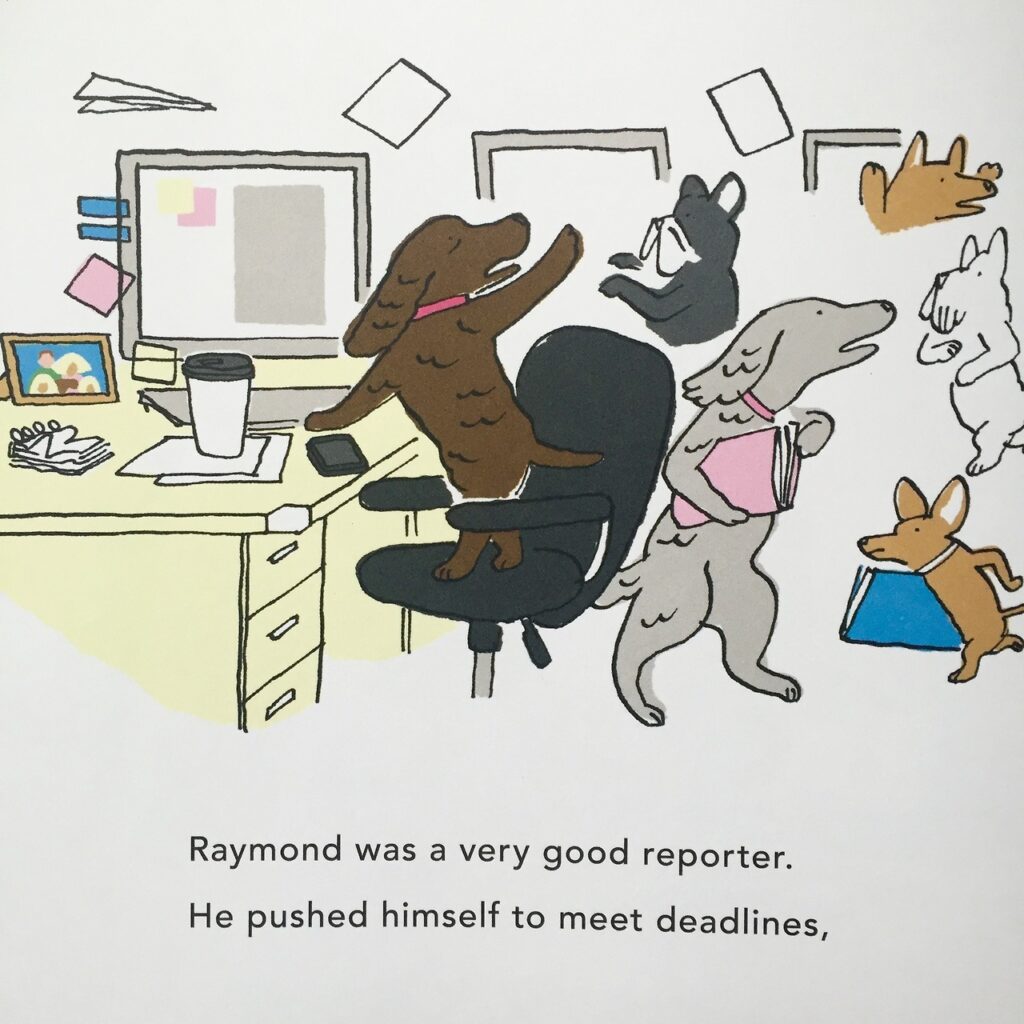




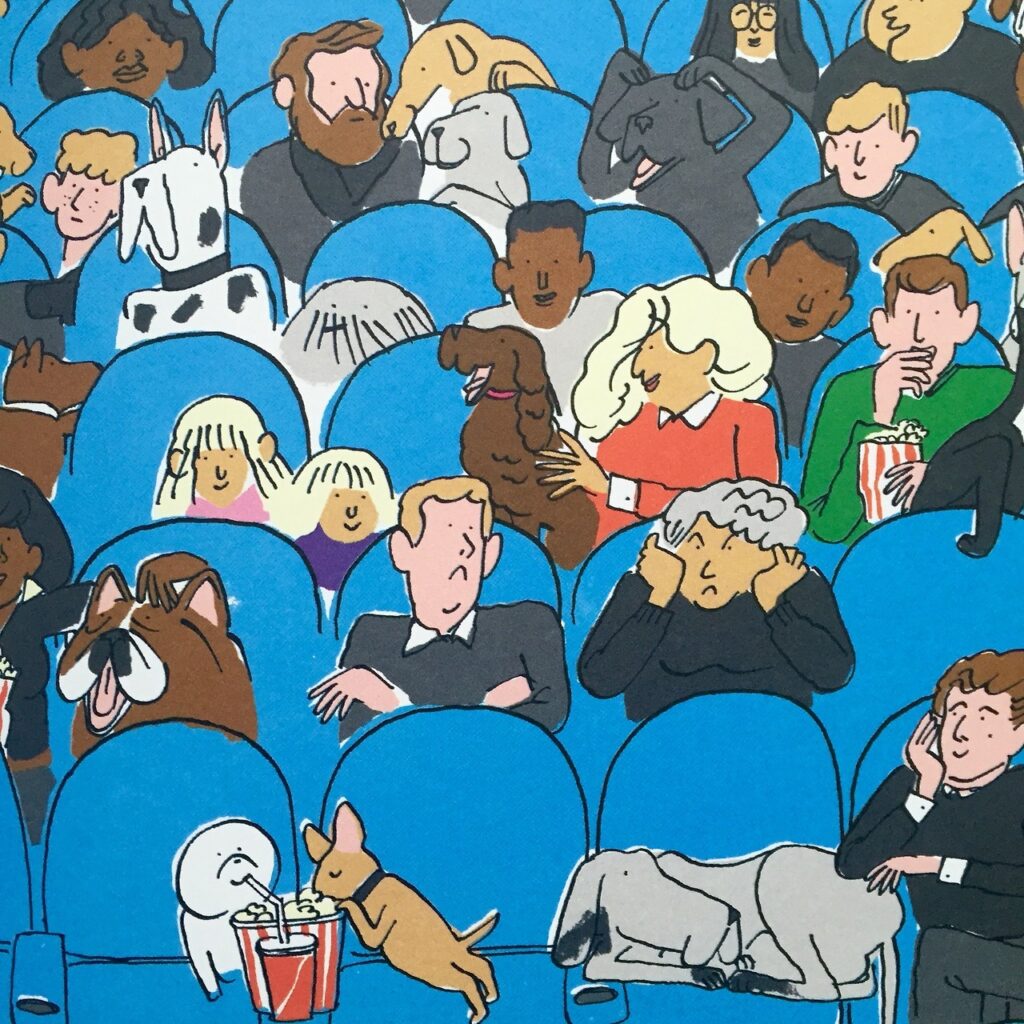

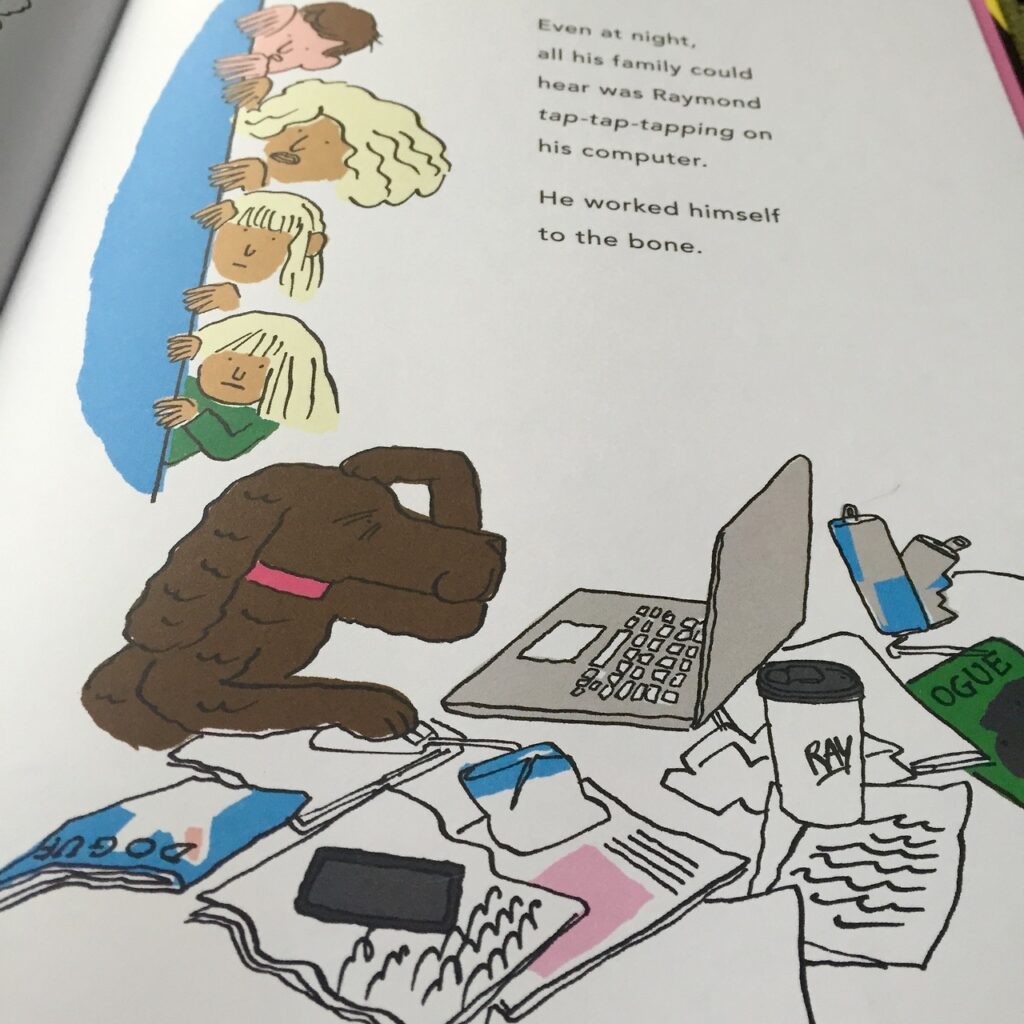
Raymond
by Yann Le Bec, Gwendal Le Bec
Candlewick
2017, 32 pages, 8.4 x 0.4 x 12.1 inches, Hardcover
Raymond is just an ordinary dog, living an ordinary dog’s life. But when he decides that he should eat with the rest of the family at the dinner table one evening, things start to change. Soon, all the dogs in town are getting a taste for life on two feet. In the hustle and bustle of his high powered job, Raymond almost forgets that even the hardest working person or pup needs to be thrown a bone now and then.
French author/illustrator/brother team, Yann and Gwendal Le Bec, bring their signature wit and style to this book, making Raymond a truly funny, bright, sweet read-aloud for both kids and grown-ups. To be honest, I think I enjoy this book even more than my preschooler did. Many of the illustrations work as stand-alone cartoons with details that hit close to home for anyone working hard, especially in print media—the ever-present reporter’s notebook, cell phone, and cup of coffee, the late nights hunched over a laptop surrounded by notes and back issues.
For whoever gets their paws on it, Raymond is a great excuse to take a break, read a good book, and remember to get your belly rubbed.
SECRET CODES & NUMBER GAMES: CRYPTOGRAPHIC PROJECTS & NUMBER GAMES FOR CHILDREN AGES 5-16
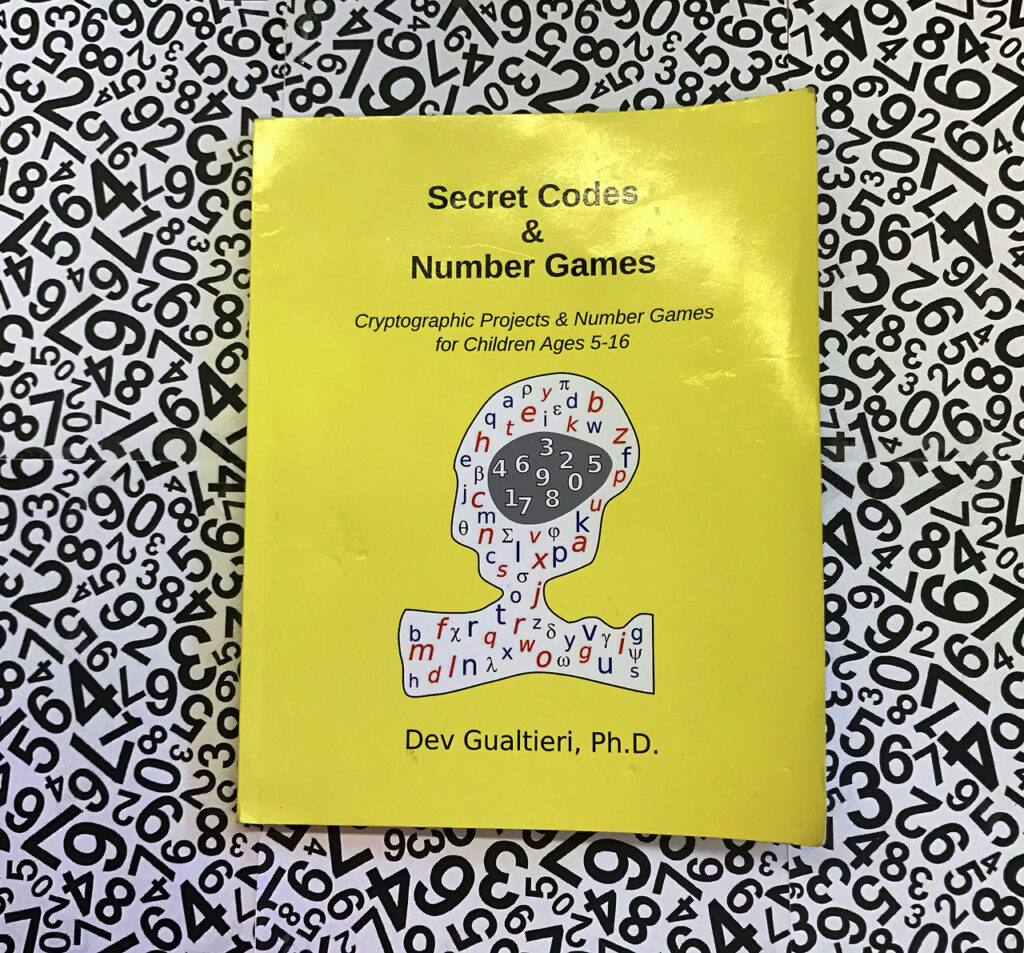
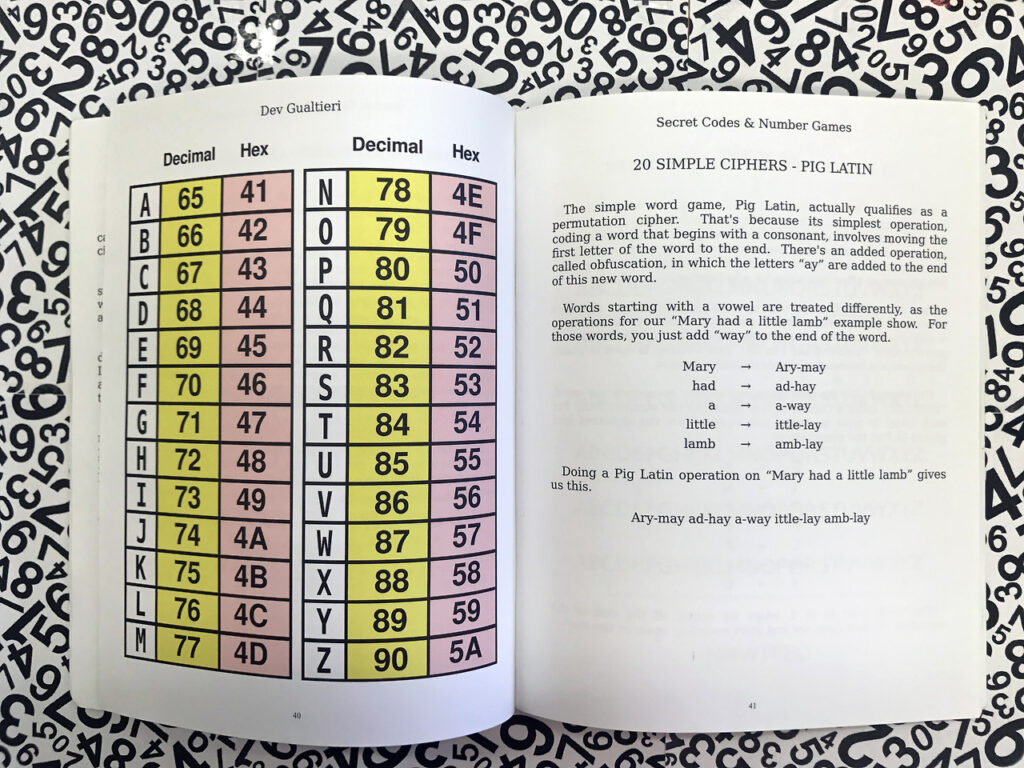
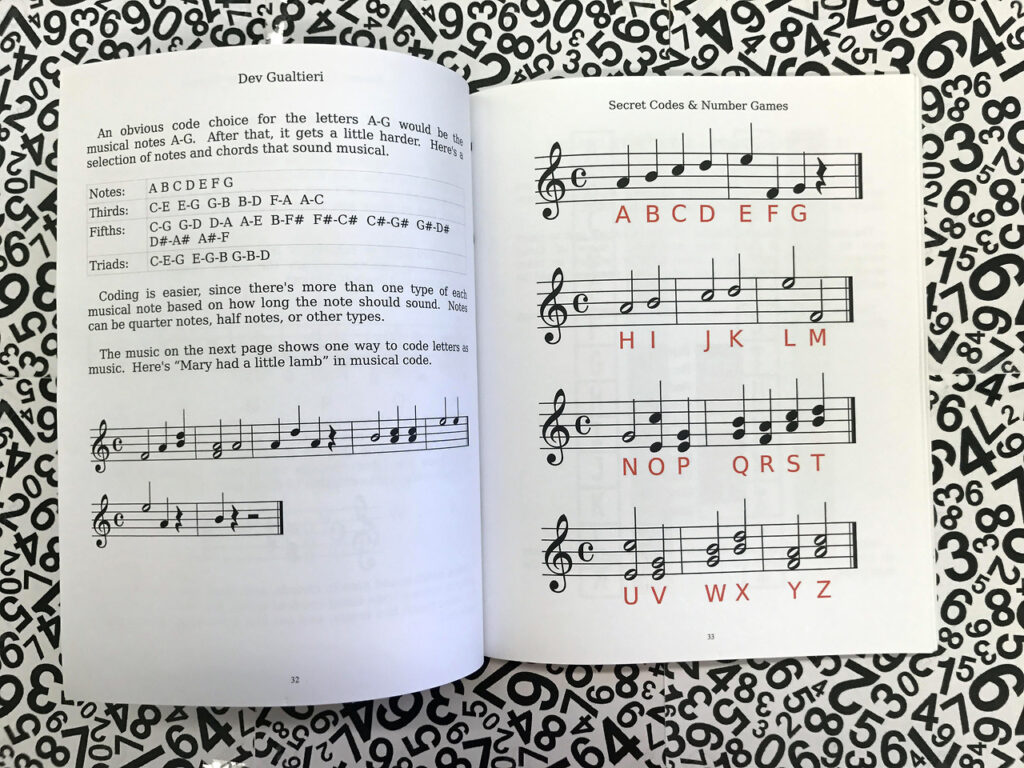
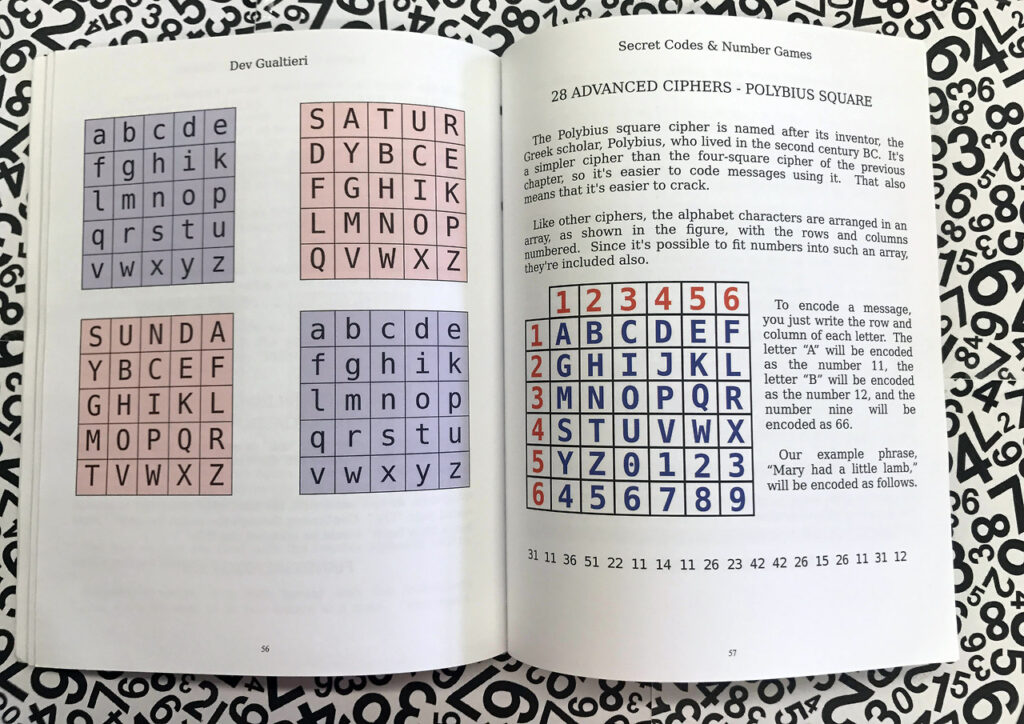
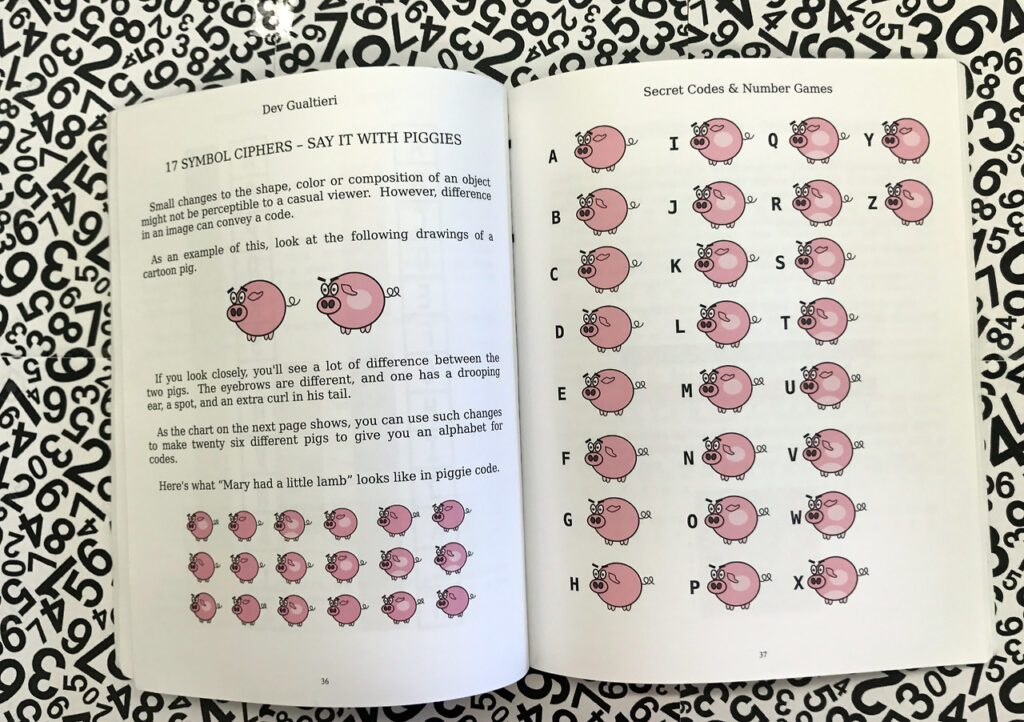
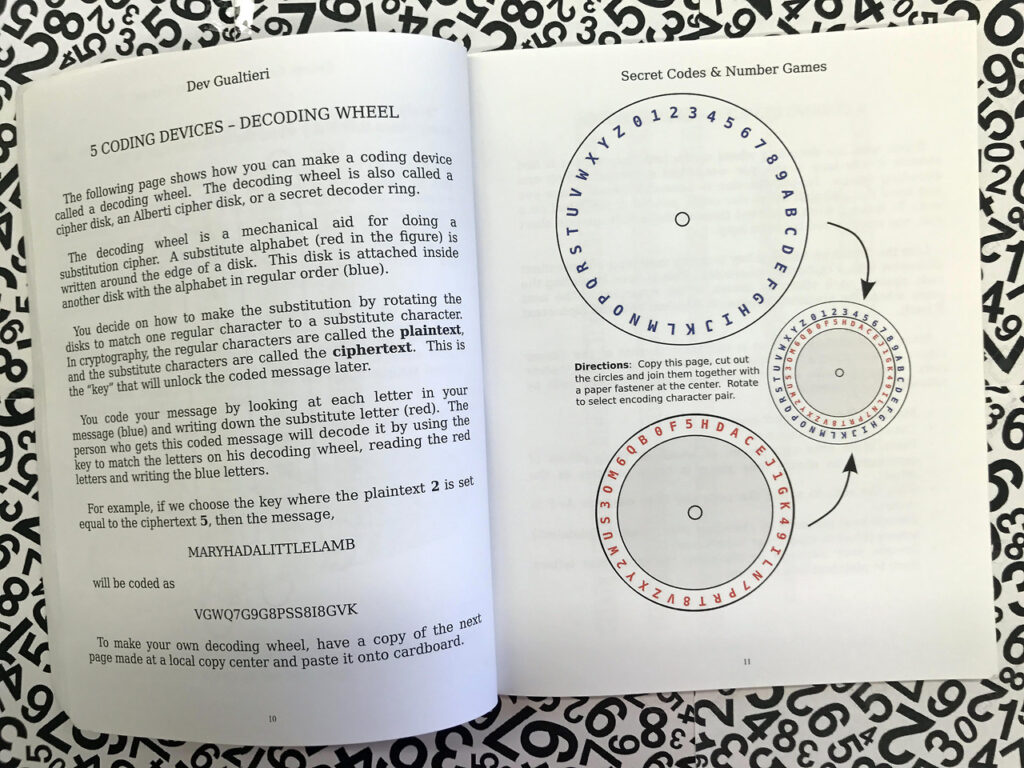
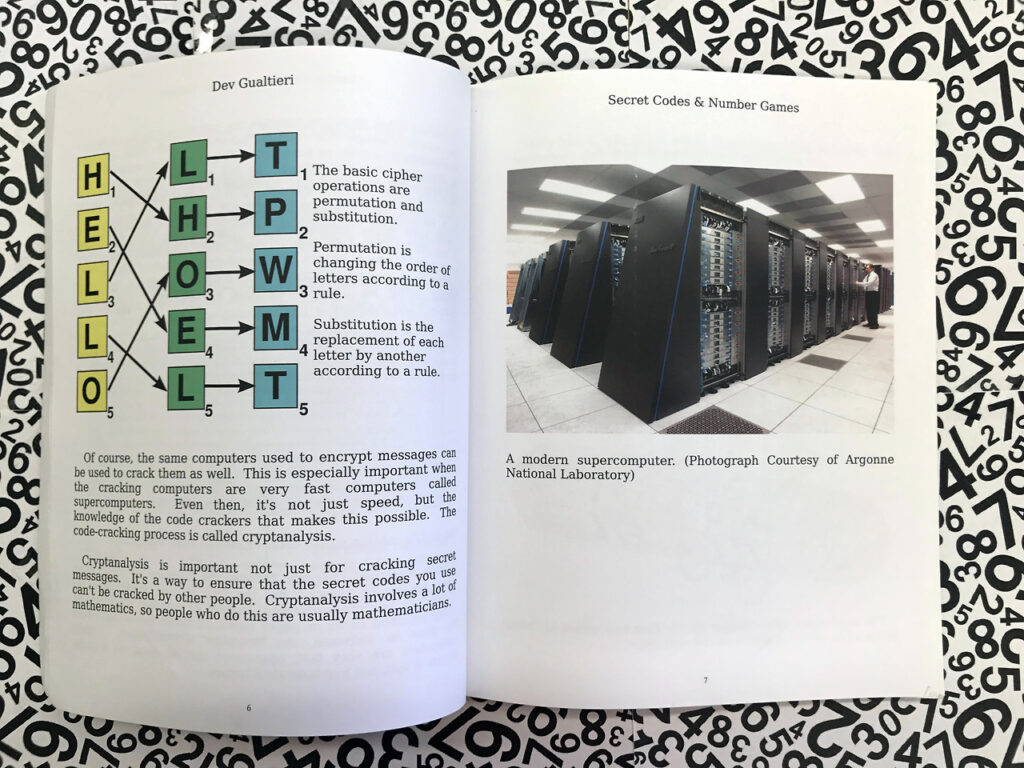
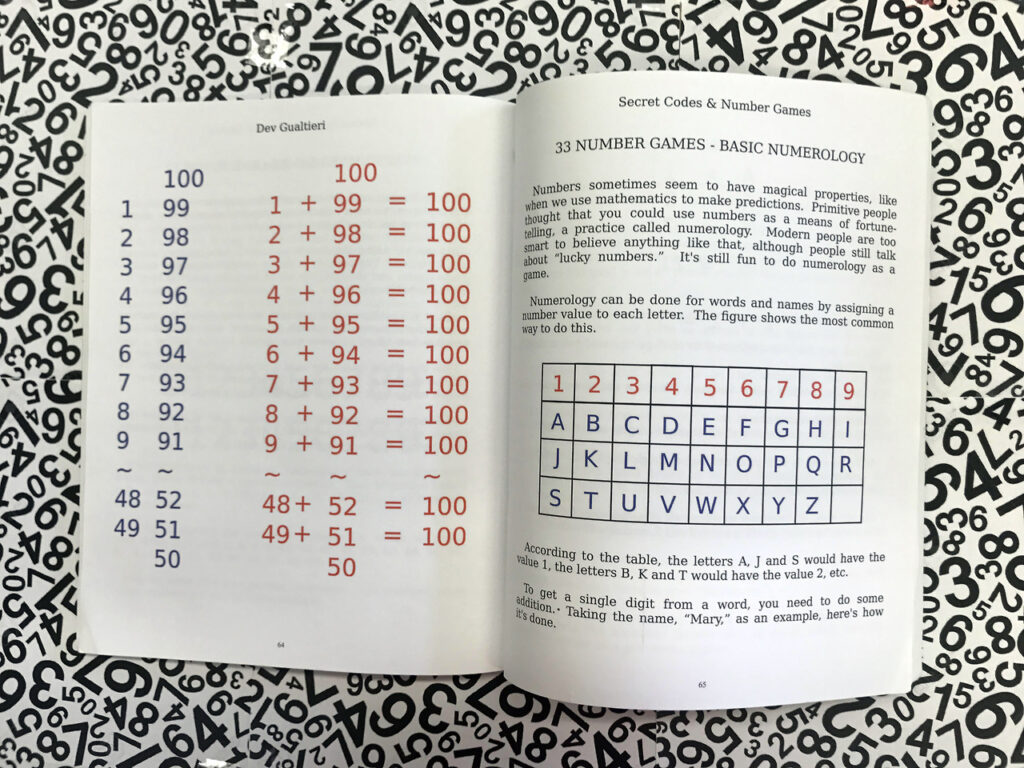
Secret Codes & Number Games
by Dr. Dev Gualtieri Ph.D.
Tikalon LLC
2014, 90 pages, 8 x 0.2 x 10 inches, Paperback
Numbers have secret lives. At a conference for my fellow educators, the topic of math came up. We were asked what our favorite numbers were, and gave a myriad of reasons for our answers. I liked the contours and sinuous shape of the number eight, and the implication of infinity if you overturn it on its side. Another teacher liked the number 9, written with what to him seemed a figure with a bulbous head that bespoke great intelligence. A third liked the number 4 given that it was versatile and could branch out in different directions. All of us walked away with the understanding that numbers contain multitudes of meanings, given some creativity and the willingness to look at them closely.
Physicist and college professor Dev Gualtieri celebrates another aspect of the hidden meanings of numbers with his self-published Secret Codes & Number Games. His book is an introduction to cryptography for ages five to sixteen, complete with colorful and explicit visuals to make a potentially complex topic accessible. Gualtieri demonstrates varies types of ciphers in which numbers are substituted for letters to reveal secret messages, such as Julius Caesar’s reputed “Caesar cipher” that includes each letter with a corresponding number on a wheel. Other ciphers are more visually driven, featuring music notes on a staff or a whimsical assortment of cartoon pigs. The engaging, lucid illustrations provided for each cipher make them easy to understand.
The book naturally also delves into the mathematical aspects of cryptography, a subject that Gualtieri offers a brief history of in his introduction. From there, readers can consult a colorful chart with the numeric ASCII computer code for each letter of the alphabet to enable simple pencil-and-paper encryption. Also featured are the Polybius Square, which uses a coordinate grid to encode each letter, and several chapters devoted to numerology. A final chapter encouraging creating one’s own ciphers bases on the simple computational principles introduced earlier brings the reader back full circle.
Gualtieri ultimately inspires readers to re-consider their relationship to numbers. We use them daily for mundane tasks such as counting change, making phone calls, or calculating tips on restaurant bills. Yet numbers also conceal and reveal, enabling us to keep secrets hidden and to share them discreetly. Gulateri’s book is more than educational entertainment. It stands as a reminder that numbers are just like people: nuanced, fascinating, and worth getting to know on a deeper level.
– Lee Hollman
04/9/24





